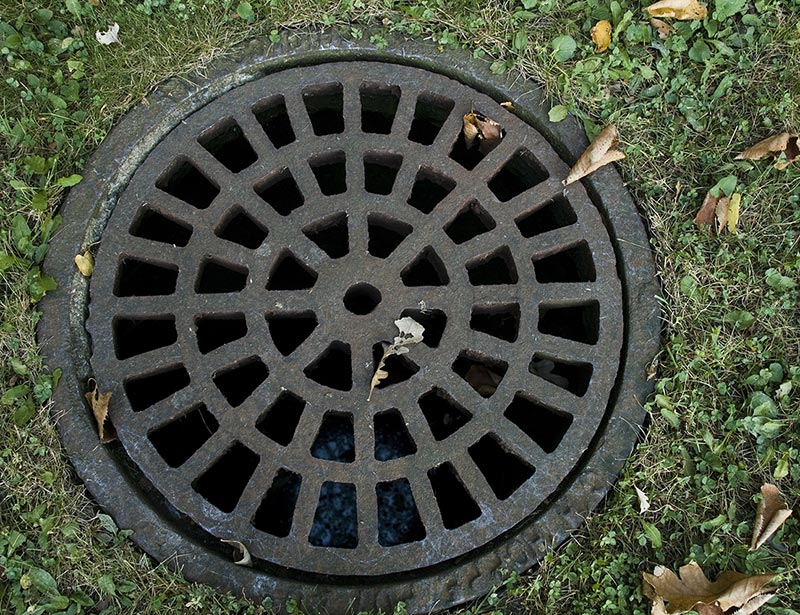A sewer line blockage can be an ugly, smelly, and expensive mess. Once there is a blockage, you might quickly smell the foul odor or see water leaking. You certainly will know there is a problem. A sewer line clog is a very serious problem that can be considered a plumbing emergency. The quicker you get the sewer line cleared, the better chance you will have that the line doesn’t bust. And if your sewer line has busted, then you definitely want to act fast.
Blockage of your sewer lines is one of the most common problems in plumbing. What happens is that food waste, hair, paper, and more get clogged in a drain, causing the sewer line to backup or crack. If you have kitchen and bathroom sink drains or toilets that are slow to flush or need regular plunging, this is a sign of a blockage in the sewer pipe.
Here are some of the steps to take when you have a sewer line blockage:
- The first thing to do in the event that your sewer line is blocked is to shut off all water and don’t use any plumbing in the house until the blockage is cleared or you can isolate the problem. Next, identify where the line is located and the sources of plumbing fixtures/drains that go to that sewer line.
- Start checking plumbing fixtures in the home. It is very important that you don’t force anything else through a clogged sewer line. This means if you have a line that is blocked and the toilet is backing up, stop using the toilet until you fix the problem. But too often multiple plumbing fixtures are involved. You don’t want to pour anything more down sinks that will add to the blockage in that line. In the bathroom, you have a tub/shower and sinks that could be affected. In the kitchen, you have garbage disposals and sinks that could be affected.
- When checking which fixtures may be affected by a clog, be careful. There could be some strange reactions from your fixtures. For example, flushing your toilet might cause a backup in the tub and/or shower. That is because the tub/shower drain is usually at a lower point. Another reaction could be running the sink and seeing bubbles coming up from the toilet.
- If you suspect your sewer line is blocked but not cracked or broken, you might be able to unclog waste and debris with a plunger. If plunging unclogs the line, great, you probably had a problem close to the fixture that was easy to fix. But if not then follow up the plunging with a simple mix of equal portions of hot water and vinegar or a store-bought drain cleaner. You may have to wait for the mixture or cleaner to work. It may take several hours. And you might have to use the vinegar mixture or cleaner at multiple points that drain into the line.
- If these methods don’t work and you still think your sewer blockage hasn’t damaged the pipe, you may have to call the plumber. The plumber might first try to use a snake to unclog the waste and debris. There are also mechanical methods that force pressure (sewer jet nozzles) or air (air burst drain cleaners) through the pipe to try and break up the clogged waste and debris.
- For more serious blockages or if you know you have a cracked or busted pipe, the line will require repair. Your plumber may have to cut through walls to get to the line for repair. But there may be times when you really don’t know where the blockage is located. You know you have blockage because a toilet or sink is backing up. In this case, the blockage might be further down the line where most chemical and mechanical fixes can’t reach it. Look for signs of leakage along the walls or floor. And if you still can’t find the location of the blockage you might need to have the line inspected.
- There are different types of inspections for sewer lines, such as leak detection instruments and cameras. If you don’t see signs of a leak, you may be able to locate the leak with a non-intrusive leak detector device that listens for noises such as increased gurgling that may indicate a deep clog. Another option is to have a camera inspection. The camera allows you to go into your pipe from the area that is backing up to see what is inside the pipe. Any inspections using equipment can be expensive. And then once you locate the problem, you will still have to repair the line. That could mean pulling up tile or cutting through a wall to get to the line for repair.
The location of sewer line blockages can be obvious, or they can be elusive and destructive. Calling an expert plumber during an emergency such as when you have a sewer line blockage can help get your sewer system working back the way it should as quickly and cost-effectively as possible.
